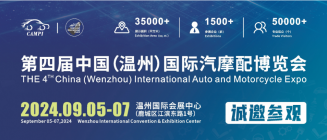Scan QRCode

During the outbreak, telecommuting, online education and residents' demands for videos and games led to a surge in Internet traffic, driving up demand for stable, fast networks and 5G."Globally, the importance of new infrastructure such as mobile communications and the Internet has never been as important as it was in the outbreak," zhao said.
The covid-19 epidemic continues to spread around the world, and its impact on a wide range of industries is becoming more complex.The outbreak has disrupted plans for 5G deployment, which was widely seen as the year of large-scale deployment in 2020 and was expected to involve and power multiple industries.
As the outbreak spread overseas, strict controls became one of the common measures adopted by many governments.In this context, the operator site acquisition, network deployment and installation work may be difficult to carry out."If these controls are not eased in time, there may be some impact on the speed of 5G deployment."Yang guang, director of strategic services for wireless carriers at Strategy Analytics, told 21st century business report that "the extent of the impact is related to when the epidemic will be contained globally, especially in developed countries in Europe and the us, and it needs to be further observed."
Compared with overseas countries, China's 5G construction is expected to meet or even exceed previous expectations this year, thanks to the effective control of the epidemic and the enhancement of new infrastructure.On March 24, China's ministry of industry and information technology (miit) issued a notice on promoting the accelerated development of 5G, to increase support from multiple levels, so as to give play to the scale effect and driving role of the new 5G infrastructure.
On March 31, xu zhijun, rotating chairman of huawei, said that the deployment of 5G in Europe will be delayed, depending on how long the outbreak lasts.It is believed that China's three major operators will achieve the full-year 5G infrastructure construction target, and may even increase the original plan.
Stocking up on components is enough to worry about continued outbreaks abroad
Before the outbreak caused a global pandemic, analysis of the impact of 5G deployment focused more on weakening market demand.At the time, the epidemic was still largely confined to China, the world's largest smartphone market, with nearly half of 5G shipments.On the other hand, the outbreak in China is expected to be contained within months, and many manufacturers are well on track to resume production.
Recently, the disease has spread around the world.The total number of confirmed cases worldwide on March 31 was more than 788,000, according to Johns Hopkins university.Concerns about the outbreak's impact on the global supply chain, particularly on the supply of core components, have also been raised.From the perspective of equipment manufacturers, although the major manufacturers of the core components have a certain amount of stock, but if the outbreak is not controlled in a short time, it will undoubtedly affect the supply of equipment manufacturers.
Zhao juntao, President of Ericsson China, told 21st century business herald that he was worried about whether the outbreak could be controlled in two months, as in China, after he introduced the resumption of production at its factories and suppliers in China in an online exchange.
In an interview with 21st century business herald, Yang guang pointed out that one of the uncertainties brought by the new outbreak to the industry is the possible impact on the global supply chain.Among them, the network equipment manufacturer's supply chain has been affected is "inevitable".
Xie yushan, an analyst with jibang consulting, also pointed out to 21st century business herald that large equipment factories still face the problem of "upstream shortage of materials and production shortage of workers".For example, China's main production of printed circuit boards (PCBS) is concentrated in jiangsu and guangdong provinces, as well as sichuan, hubei, liaoning hekou and hebei qinhuangdao.Although the restarting rate of factories outside hubei has reached 5-60%, it is difficult to return to normal level in a short time.
Ericsson China President zhao juntao also confirmed the status quo in an interview.China is the most important node in Ericsson's global supply chain, and its nanjing mobile equipment plant is the company's largest.In addition, China is home to Ericsson's largest number of suppliers, particularly in passive components, and its global supply chain depends heavily on China.Although with the support of jiangsu province and nanjing municipal government, Ericsson has made rapid progress in its resumption of work, and core suppliers and primary suppliers have basically resumed work, "suppliers' suppliers" may still face certain challenges.
In addition, whether level 1, level 2 or level 3 suppliers, the staff arrival situation is still worth attention."There were still travel restrictions in the country [in February] and the attendance rate was not high.""From the first 20 percent, 30 percent, to the next 50 percent, 70 percent, the domestic situation is better now," he told the 21st century business herald.
But the impact on global supply chains is hard to predict as outbreaks escalate overseas.For example, the us semiconductor association (SIA), concerned about controls during the outbreak, has recently called on the us government to include the semiconductor industry as a basic and essential industry and to continue to operate in order to secure supplies to all sectors of the world.
Mr Yang points out that big equipment manufacturers, whether huawei, zte or Ericsson, have their main factories in China and source key components from Japan, Europe and elsewhere.Ericsson, for example, USES semiconductors and chips from the u.s., Japan, South Korea and Taiwan.
"We are worried about the international situation, including how long it will last and whether it can be controlled as quickly as China," zhao said in an interview.
However, Yang also said that at present, as long as the outbreak does not last too long, the impact is still manageable.On the one hand, the domestic epidemic happened to coincide with the Spring Festival holiday, the original production efficiency is low, if the recent comprehensive resumption of work goes well, the impact on the annual supply will not be too big;As for the core components, the major manufacturers will usually have a certain amount of stock.
In an interview, Mr. Zhao said Ericsson's impact in the first quarter was' very limited 'from a global supply perspective."We also have strong cash flow and a competitive product portfolio and cost structure."
But he also noted that there are many uncertainties."If the outbreak continues for the next two quarters, it will have an impact on the entire supply chain.""If it lasts longer, it will have an impact on the whole industry and even the related industries," he told 21st century economics.
In addition, there is much talk of weakening end-market demand.A number of industry analysts have recently downgraded their forecasts for global smartphone shipments in 2020.
For example, on the basis of "not making overly optimistic assumptions" in January, GCB recently revised down its shipment forecast to 1.296 billion units, down 7.5% from 2019.At the same time, the agency also said there are more variables in the follow-up development, if the outbreak drags into the second half of the year, the decline may continue to expand.
Meanwhile, how much kinetic energy 5G can inject is hard to quantify.Yang guang admitted that there are still some doubts about the market demand for 5G: consumers' willingness to adopt 5G seems to be insufficient; and as for the vertical industry, it is a "long tail" market, which is difficult to form a large scale in a short time.
Telecommuting drives demand for network infrastructure
Still, telecommuting, online education and demand from residents for video and games have led to a surge in Internet traffic during the outbreak, driving up demand for steady, fast networks and 5G."Globally, the importance of new infrastructure such as mobile communications and the Internet has never been as important as it was in the outbreak," zhao said.
Global telecommuting in the wake of the outbreak is giving operators and countries' communications infrastructure a big test.The eu, for example, has asked video sites such as Netflix and Youtube to lower the quality of their streaming to ensure the region's Internet works smoothly.
Take Ericsson's global service center (GSC) as an example. The four important nodes of this global 7x24-hour service system are located in China, India, Romania and Mexico.Affected by the outbreak, employees in the host country have entered the state of "working from home".But in some countries, the lack of communication-related infrastructure has had an impact on the remote work of workers at home.
By contrast, although China has yet to completely get rid of the "home office", the high quality of Internet infrastructure guarantees the work efficiency of the "home office"."Our headquarters is considering whether the global GSC system should be coordinated with the Chinese node to take on more work from the improved epidemic prevention situation."Zhao juntao said.
In addition, some 5G applications were also practiced during the epidemic.Measures such as epidemic prevention, emergency response, home quarantine and telecommuting during the epidemic will promote consumers' information consumption behavior and the demand for communication connections in vertical industries, and will also benefit the development of 5G networks, Yang said.
According to a recent analysis, despite high hopes, the current construction speed of 5G private networks is still lagging behind that of public networks.Ericsson China President zhao juntao also pointed out to 21st century business reporter that the current progress of private network is indeed slower.
In his view, the construction of private networks first needs a spectrum base, but this is still under discussion;In addition, private networks are more complex and challenging to meet the professional requirements of vertical industries.
The ministry of industry and information technology said China's 5G construction is expected to accelerate
Compared with overseas countries, the pace of 5G construction is still expected to meet or even exceed previous expectations as the epidemic in China is gradually brought under control and "new infrastructure" is added.Xie yushan, an analyst with jibang consulting, said it depends on the level of government support and the attitude of operators.
In march this year, China mobile issued a notice on the centralized procurement of wireless network master equipment in the second phase of 5G, and launched a tender for the procurement of 230,000 base stations in 28 provinces, autonomous regions and municipalities directly under the central government.In addition, on March 24, China's ministry of industry and information technology issued the "notice on promoting the accelerated development of 5G" to increase support from multiple levels, so as to give play to the scale effect and driving role of 5G new infrastructure and support high-quality economic development.
"The miit document answers many key questions and gives a clearer direction to manufacturers and participants in the industry.""In this sense, [the release of the document] is also 'the right time,'" zhao said.
Mobile, on the other hand, has traditionally been an investment-driven market."Revenue growth of the three major operators in 2019 has been lower than or close to zero," Yang said. "we need to stimulate growth with new technologies and new businesses, and explore new market space with new technologies."
Judging from their 2019 results, China's three major carriers are indeed all facing pressure for revenue growth.However, 5G investment from the three major carriers totaled 41.2 billion yuan in 2019;In 2020, the figure will exceed 180 billion yuan, and 5G investment accounts for half or even half of capital expenditure.
Yang believes that the 5G process will not be greatly affected by the government's efforts and the operators' investment plans, given the stable situation of the domestic epidemic.
In particular, he noted that if the global spread of the disease had a broader impact on China's export-oriented industry, the government could also boost its push and support for new infrastructure, which could further accelerate domestic 5G construction.
AMS2024 Exhibition Guide | Comprehensive Exhibition Guide, Don't Miss the Exciting Events Online and Offline
Notice on Holding the Rui'an Promotion Conference for the 2025 China (Rui'an) International Automobile and Motorcycle Parts Exhibition
On September 5th, we invite you to join us at the Wenzhou Auto Parts Exhibition on a journey to trace the origin of the Auto Parts City, as per the invitation from the purchaser!
Hot Booking | AAPEX 2024- Professional Exhibition Channel for Entering the North American Auto Parts Market
The wind is just right, Qianchuan Hui! Looking forward to working with you at the 2024 Wenzhou Auto Parts Exhibition and composing a new chapter!
Live up to Shaohua | Wenzhou Auto Parts Exhibition, these wonderful moments are worth remembering!
Free support line!
Email Support!
Working Days/Hours!





